MRI Scans in Dementia Diagnosis: Insights and Implications
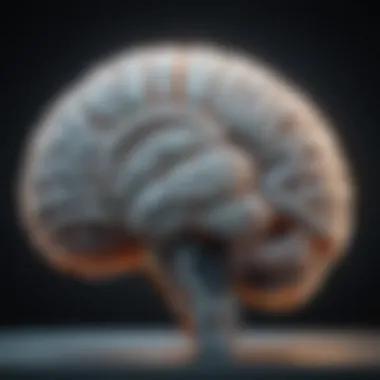
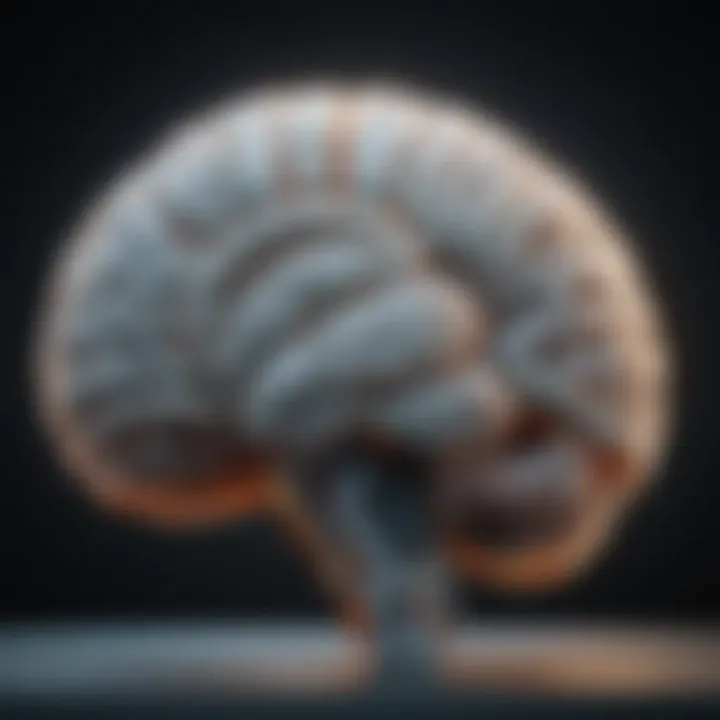
Intro
Dementia represents a cluster of cognitive disorders, each affecting memory, thinking, and social abilities. With millions of individuals worldwide impacted by this condition, understanding how it is diagnosed becomes crucial. One of the most vital tools in dementia diagnosis is magnetic resonance imaging, commonly known as MRI. This article aims to delve into the role of MRI scans in diagnosing dementia, alongside exploring their significance and the underlying technology.
MRI technology uses strong magnets and radio waves to create detailed images of the brain. Unlike other imaging methods, MRI does not use ionizing radiation, making it a safer option for patients. It provides insights into structural changes in the brain, which can be indicative of various types of dementia. Understanding these changes can ultimately guide effective treatment plans and support management strategies.
Throughout the article, we will examine the key findings related to MRI's impact on dementia diagnosis, consider the methodology behind MRI studies, and highlight the types of dementia identifiable through this imaging technique. Furthermore, we will address some limitations associated with MRI, ensuring a comprehensive look into its role in the clinical setting.
Understanding Dementia
Understanding dementia is critical in comprehending the role of MRI scans in diagnosis. Dementia is a broad term that refers to a decline in cognitive function that interferes with daily life. By grasping the mechanisms of dementia, one can appreciate how MRI technologies can aid in identifying structural changes in the brain. This knowledge ultimately influences patient management and treatment pathways.
Dementia encompasses various types and forms, each with unique characteristics. Recognizing these differences is vital for healthcare practitioners, researchers, and families affected by cognitive disorders. Furthermore, understanding the symptoms and their progression informs not just diagnosis but also care strategies for those living with dementia.
Definition and Types of Dementia
Dementia is not a singular condition. It is an umbrella term that includes several disorders with distinctive causes and manifestations. The most recognized type is Alzheimer’s disease, characterized by memory loss and cognitive impairment. Other variations include vascular dementia which arises from problems in blood supply to the brain; dementia with Lewy bodies, which combines symptoms of Alzheimer's and Parkinson's disease; and frontotemporal dementia which primarily affects behavior and language. Each type presents with specific features, and understanding these differences enhances the accuracy of diagnosis using imaging techniques like MRI.
Symptoms and Progression
The symptoms of dementia vary widely depending on the type and stage of the disease. Early signs often include minor memory issues as well as difficulty with problem-solving. As the condition advances, individuals may experience significant memory loss, confusion about time or place, changes in mood and behavior, and challenges in communication.
The progression of dementia is generally gradual, though it can differ greatly between individuals. Some may experience a slow decline over several years, while in others, progression can be more rapid. Understanding these symptoms and trajectories is essential because it helps clinicians and family members to anticipate care needs and understand the role of MRI scans in highlighting brain changes associated with these cognitive declines.
"MRI scans play a crucial role in distinguishing between various types of dementia, as well as providing insight into the extent of brain changes."
The Role of Imaging in Dementia Diagnosis
Imaging techniques hold a crucial position in the landscape of dementia diagnosis. They provide visual insights into brain structure and function, offering a more objective approach to understanding cognitive decline. Neuroscientists and clinicians often rely on imaging to corroborate clinical findings and to establish a more definitive diagnosis.
Dementia is a complex group of disorders, and each subtype can present differently. This complexity demands sophisticated methods of detection. Imaging helps to identify specific brain alterations that are indicative of various types of dementia. Moreover, it aids in distinguishing dementia from other conditions that may mimic its symptoms, such as depression or deliriu. This important differentiation is essential for guiding appropriate treatment avenues.
Overview of Imaging Techniques
There are several imaging modalities available in the context of dementia diagnosis. Some prominent techniques include:
- Magnetic Resonance Imaging (MRI): This non-invasive technique uses strong magnetic fields and radio waves to create detailed images of the brain. It is particularly adept at visualizing soft tissues, making it ideal for assessing brain structure.
- Computed Tomography (CT): CT scans combine X-ray images to produce cross-sectional views of the brain. While CT may be quicker and more accessible, its resolution for soft tissues is lower compared to MRI.
- Positron Emission Tomography (PET): PET scans allow for the visualization of metabolic processes in the brain. It can be particularly useful in identifying abnormal protein deposits associated with Alzheimer's disease.
Each of these techniques has unique advantages. The choice of imaging method often depends on factors such as availability, patient condition, and specific diagnostic requirements.
Advantages of MRI in Neurology
MRI stands out among imaging methods for several reasons that are particularly relevant to neurology.
- High Resolution: MRI provides superior resolution of brain structures, enabling identification of subtle changes that may occur in the early stages of dementia.
- No Radiation Exposure: Unlike CT scans, there is no ionizing radiation involved, making MRI a safer option, especially for frequent monitoring of patients.
- Versatile Imaging Options: Various MRI sequences allow visualization of different aspects of brain geometry and function. For instance, functional MRI assesses brain activity by measuring blood flow, while diffusion tensor imaging maps white matter integrity.
- Characterization of Brain Anomalies: MRI can detect specific patterns of atrophy, aiding in the differentiation of dementia types. For instance, bilateral hippocampal atrophy is often observed in Alzheimer’s disease whereas vascular dementia may show different vascular changes.
"MRI is not just a tool for diagnosis; it is integral to understanding the underlying pathology of dementia."
In summary, imaging plays an indispensable role in diagnosing and understanding dementias. MRI, in particular, offers a wealth of information that enhances diagnostic accuracy, making it a cornerstone of contemporary neurological practice.
MRI Technology Explained
MRI technology plays a vital role in the diagnosis of dementia. Understanding how MRI works is crucial for grasping its significance in identifying and differentiating types of dementia. This section outlines the fundamentals of MRI and explores various forms of MRI scans used in clinical scenarios.
Basic Principles of MRI
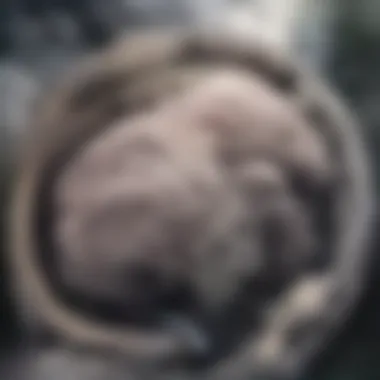

Magnetic Resonance Imaging, or MRI, is a non-invasive diagnostic tool that uses strong magnetic fields and radio waves to produce detailed images of organs and tissues within the body. Unlike X-rays or CT scans, MRI does not use ionizing radiation, making it safer for repeat use.
The basic principle behind MRI lies in the behavior of hydrogen atoms, which are abundant in the body, particularly in water and fat. When a person enters the MRI machine, the strong magnetic field aligns these hydrogen atoms. Radiofrequency pulses then disturb this alignment. As these atoms return to their original position, they emit signals that are captured by the MRI machine, creating images of the internal structure of the brain.
Types of MRI Scans
MRI is not just a single type of scan; it's a collection of various techniques tailored to capture different aspects of brain functionality and structure. Some notable types include:
Functional MRI
Functional MRI, often abbreviated as fMRI, measures and maps brain activity by detecting changes in blood flow. This technique is particularly useful in understanding which areas of the brain are active during specific tasks or when responding to stimuli.
A key characteristic of fMRI is its ability to track neural activity in real time, presenting a dynamic view of brain function. This makes it a beneficial choice for research into brain disorders, including various types of dementia. However, fMRI can be sensitive to motion artifacts, and results may vary based on the subject's state, such as their level of concentration or understanding of the tasks being performed.
Diffusion Tensor Imaging
Diffusion Tensor Imaging, or DTI, is a specific type of MRI that focuses on the movement of water molecules within brain tissue. This technique highlights the pathways of white matter tracts, which are crucial for communication between different brain regions.
The key strength of DTI is its ability to visualize the integrity of white matter, which can be compromised in dementia. It provides insights into the microstructural changes that occur in the brain as dementia progresses. A limitation of DTI, however, is that interpreting its results can be complex and may require specialized knowledge.
Contrast-Enhanced MRI
Contrast-Enhanced MRI employs a contrast agent, typically gadolinium, to improve the visibility of specific areas within the brain. This technique helps to highlight abnormalities such as tumors, inflammation, or vascular changes, which might be relevant in diagnosing certain types of dementia.
The unique feature of Contrast-Enhanced MRI is its ability to provide clearer images of vasculature and other structures, making it easier to detect issues that standard MRI scans might miss. A consideration with this type of MRI is the risk of allergic reactions to the contrast agent and the need for careful patient evaluation prior to administration.
In summary, MRI technology encompasses a variety of imaging techniques, each designed to provide essential insights into the brain. Understanding these principles facilitates better knowledge of how MRI can contribute to diagnosing dementia and improving patient outcomes.
Common Indicators of Dementia on MRI
The use of MRI scans in the diagnosis of dementia offers critical insights into the structural changes occurring within the brain. These indicators serve as vital signs for healthcare professionals to understand the progression of dementia and inform treatment decisions effectively. By identifying specific brain patterns through MRI, doctors can enhance their diagnostic accuracy and tailor individual patient care. Understanding how these scans reflect underlying neuroanatomical changes is essential for both clinicians and researchers alike.
Atrophy Patterns in Alzheimer's Disease
Alzheimer's disease is characterized primarily by distinctive patterns of brain atrophy observable on MRI scans. Most notably, the hippocampus—a region integral to memory formation—often shows significant volume loss. This atrophy can be detected early in the disease, sometimes even before clinical symptoms arise.
Moreover, the temporal and parietal lobes typically exhibit a degree of shrinkage. These changes can be quantitatively assessed, allowing for a more precise measurement of disease progression. Researchers have developed several metrics, like the hippocampal index, which can aid in tracking atrophy rates over time.
The identification of these atrophy patterns is not only clinically significant; it also enriches our understanding of the pathology of Alzheimer's. By correlating MRI findings with cognitive assessments, we can better appreciate the relationship between brain structure and function in affected individuals.
Vascular Changes in Vascular Dementia
Vascular dementia arises due to compromised blood flow in the brain, leading to distinct changes that can be visualized via MRI. Common indicators include the presence of white matter lesions, often referred to as leukoaraiosis. These lesions signify small vessel disease, which is prevalent in individuals diagnosed with this type of dementia.
In addition to white matter changes, hemorrhagic or ischemic strokes may also be noted, further complicating the imaging findings. MRI sequences such as FLAIR (Fluid-Attenuated Inversion Recovery) are particularly useful for highlighting these vascular changes, providing valuable information that can facilitate diagnosis.
Understanding vascular changes through MRI not only assists in diagnosing vascular dementia but also underpins the importance of managing cardiovascular risk factors. By addressing these factors, clinicians may reduce the likelihood of further brain injury and subsequent cognitive decline.
“MRI findings significantly contribute to distinguishing vascular dementia from other types such as Alzheimer's, allowing tailored treatment strategies.”
In summary, recognizing the distinct indicators of dementia on MRI is crucial. This understanding leads to improved diagnosis and management, enhancing patient outcomes and quality of life.
Limitations of MRI in Dementia Diagnosis
While MRI scans have significantly advanced our ability to visualize the brain and identify dementia-related changes, it is essential to recognize their limitations. Understanding these constraints is crucial for healthcare professionals as it influences diagnostic accuracy and subsequent treatment plans. By evaluating the setbacks of MRI, researchers and clinicians can better inform patients and their families. This section dives into two primary limitations: the potential for false positives and negatives, and the inherent restrictions in spatial resolution.
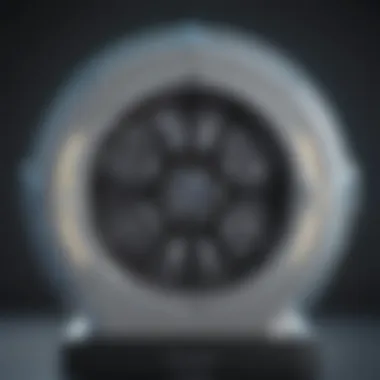
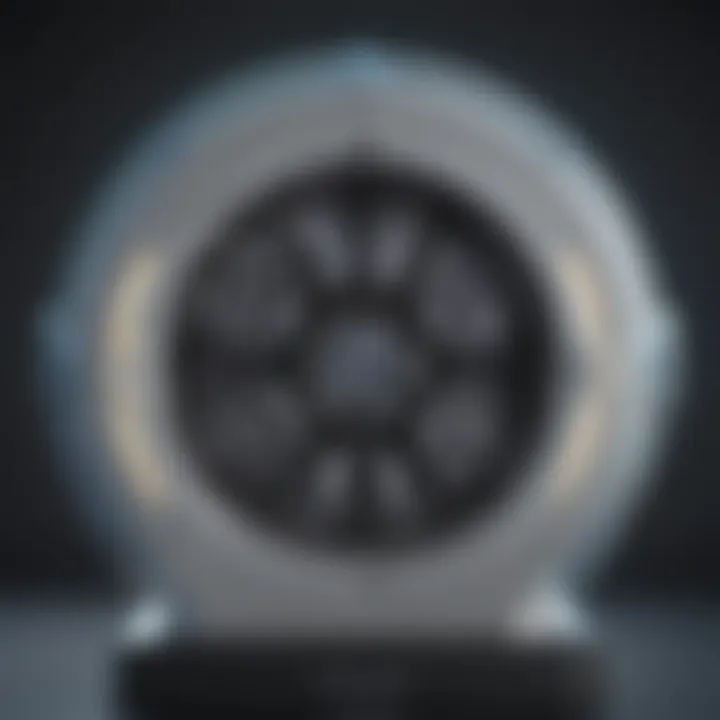
False Positives and Negatives
MRI scans can yield results that misrepresent the presence or extent of dementia. False positives occur when the scan indicates structural changes or abnormalities that suggest dementia, but the patient does not experience cognitive decline. Conversely, false negatives may happen when no abnormal findings are visible, even though dementia is present.
Research shows that false-negative results can delay diagnosis, complicating care plans and interventions.
Such inaccuracies can result due to a range of factors. Individual variations in brain anatomy and the influence of age-related changes can alter the interpretation of MRI results. Moreover, conditions unrelated to dementia, such as normal pressure hydrocephalus or small vessel disease, may present similarly on scans, further complicating the diagnosis.
When clinicians do not consider these possibilities, there is a risk of overlooking underlying dementia or unnecessarily alarming patients with incorrect diagnoses. Awareness of these inaccuracies helps emphasize the role of a comprehensive clinical assessment alongside MRI scans.
Limitations of Spatial Resolution
Spatial resolution refers to the ability of MRI to distinguish between small structures in the brain. Despite the high-resolution capabilities of modern MRI technology, it still faces limitations in resolving finer details. In the context of dementia, crucial early changes in the brain may not always be captured effectively, particularly in the interplay of complex neural networks.
The limitations in spatial resolution can obscure significant findings, especially in the detection of early-stage dementia. Microscopic changes, such as synaptic loss or amyloid deposition, often occur before macrostructural alterations become apparent.
Clinicians must therefore interpret MRI findings cautiously. They should not solely rely on imaging studies to make diagnostic conclusions. Instead, integrating MRI results with clinical evaluations and cognitive testing is vital to achieve a more accurate understanding of a patient's condition.
By acknowledging these limitations, the medical community can enhance diagnostic practices and safeguard against potential errors in dementia assessment.
Cost and Accessibility of MRI Scans
In recent years, MRI scans have become an essential tool in diagnosing dementia. However, the associated costs and the accessibility of these scans pose significant challenges for patients and healthcare systems alike. Understanding these elements is crucial for families, medical professionals, and policymakers to make informed decisions regarding dementia care.
Financial Implications for Patients
The cost of MRI scans can vary widely based on location, type of facility, and whether the patient has insurance coverage. In many cases, an MRI can cost between $400 to over $3,000. Patients often face out-of-pocket expenses, particularly if their insurance does not fully cover the procedure. This financial burden can discourage timely diagnosis and treatment, particularly among low-income patients.
Factors influencing costs include:
- Facility Type: MRI scans at specialty clinics or hospitals typically cost more compared to outpatient facilities.
- Insurance Coverage: Patients with comprehensive insurance plans may experience less financial strain. In contrast, those with high deductibles or limited coverage may face significant costs.
- Type of Scan: Certain advanced types of MRI, such as functional MRI or diffusion tensor imaging, may incur additional charges.
These financial implications often extend beyond the initial scan. Follow-up appointments, prescription medications, and ongoing care needs can accumulate additional expenses. Many families find themselves in difficult situations, weighing the costs against the benefits of early dementia diagnosis.
Availability of Facilities
Another crucial aspect of MRI scans is the availability of facilities that can provide them. Access to MRI machines is not uniform across regions. In urban areas, facilities are more frequent, allowing quicker access to patients. Conversely, rural areas often struggle with limited options, which can lead to longer wait times and travel burdens for patients.
Key elements regarding availability include:
- Geographic Disparities: Facilities that offer MRI services are often concentrated in cities, leaving rural populations underserved.
- Wait Times: In areas with high demand and limited machines, patients may wait weeks or months to receive an MRI, delaying diagnosis and treatment.
- Health Infrastructure Support: Factors such as government policies and funding for healthcare infrastructure can impact the establishment and maintenance of MRI facilities.
Access to timely MRI scans is vital not only for accurate diagnosis but also for the effective management of dementia-related symptoms.
In summary, addressing the cost and accessibility of MRI scans is essential for ensuring that patients receive timely and effective care. Without adequate facilities and manageable financial implications, many individuals at risk for dementia may face barriers in accessing the necessary diagnostic tools.
Future Directions in MRI Research
The field of MRI research continues to evolve, reflecting the complexities of neurodegenerative diseases like dementia. The importance of this topic lies in how advanced imaging techniques can enhance diagnostic accuracy and improve clinical outcomes. As researchers look toward the future, several specific elements emerge as pivotal in refining MRI's role in dementia diagnosis.
Advancements in Imaging Technology
Innovations in MRI technology are rapidly transforming the field. High-resolution imaging techniques, such as 7 Tesla MRI, offer unprecedented detail of the brain's microstructure. This level of detail may uncover subtle changes that standard MRI scans might miss. Furthermore, the integration of artificial intelligence algorithms helps in analyzing imaging data, reducing the workload on radiologists while increasing diagnostic precision.
Other notable advancements include the development of hybrid imaging methods that combine MRI with positron emission tomography (PET) scans. This synergistic approach allows for metabolic and structural evaluations of the brain, offering a more comprehensive view of neurodegenerative changes. Such integration can significantly aid in differentiating between various types of dementia, such as Alzheimer’s disease and frontotemporal dementia.
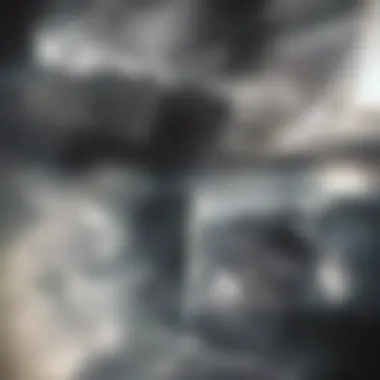

Potential for Early Detection
The potential for early detection of dementia through advanced MRI techniques is one of the most promising future directions. Early diagnosis is crucial as it opens the door for preventive interventions and tailored therapeutic strategies. MRI, particularly when used in conjunction with other biomarkers, can identify changes in brain structure and function well before the onset of clinical symptoms.
Emerging research focuses on specific biomarkers identifiable through advanced imaging. For instance, changes in the hippocampus' volume may indicate early Alzheimer's pathology. Recognizing these indicators can prompt earlier clinical involvement, potentially slowing disease progression and improving patients' quality of life.
"Early detection of brain pathology significantly alters the management pathways for patients at risk of dementia."
In summary, the future directions in MRI research are vital for improving dementia diagnosis. Advancements in technology and the quest for early detection can fundamentally shift how clinicians approach neurodegenerative diseases, promising better outcomes for patients.
Best Practices for Using MRI in Dementia Diagnosis
When considering the use of MRI scans for diagnosing dementia, understanding best practices is crucial. This section emphasizes specific elements and benefits of effective MRI use in dementia investigation, providing valuable insights for students, researchers, educators, and professionals in the field.
Interdisciplinary Approach
The interdisciplinary approach is essential for effectively utilizing MRI in dementia diagnosis. Collaboration between neurologists, radiologists, psychologists, and geriatricians contributes to a more comprehensive understanding of patient conditions. Each specialist plays a unique role.
Neurologists can assess clinical symptoms, while radiologists interpret MRI images, identifying specific brain changes associated with different types of dementia. Furthermore, psychologists contribute by evaluating cognitive conditions, offering insights into how imaging findings correlate with cognitive decline. This collaboration among professionals ensures that MRI findings are combined with clinical information, enhancing the accuracy of the diagnosis and treatment plans.
Patient-Centric Considerations
Incorporating patient-centric considerations significantly improves the overall effectiveness of MRI scans in dementia diagnosis. Understanding the patient’s history, concerns, and preferences is vital. Patient comfort is paramount during the MRI process. Many dementia patients may experience anxiety in clinical settings. Therefore, creating a supportive environment impacts the quality of the scans and the well-being of the patient.
Moreover, communication plays a vital role in this context. Clear explanations about the procedure help alleviate fears and uncertainties the patient may have. This also aids in ensuring that they remain still during the scan, contributing to better-quality images. Involving family members can provide additional comfort and support.
By focusing on the patient’s unique experience, healthcare professionals can facilitate more accurate assessments, ultimately leading to improved diagnosis and treatment outcomes. Collectively, these best practices enhance the role of MRI in dementia diagnosis, fostering collaboration and emphasizing patient needs.
Integrating MRI Results with Clinical Assessment
The integration of MRI results with clinical assessment is critical in the comprehensive diagnosis of dementia. MRI scans provide detailed insights into the structural and functional changes in the brain. These findings, when combined with a patient’s clinical history and cognitive symptoms, enable healthcare professionals to form a more accurate diagnosis. The collaboration between imaging specialists and clinicians can yield valuable perspectives, improving patient outcomes.
Emphasizing the specific elements that contribute to this integration is essential. First, MRI results can validate clinical suspicions. For instance, if a clinician suspects Alzheimer's disease based on cognitive decline and behavioral changes, MRI findings that indicate characteristic patterns of atrophy can corroborate this suspicion. This synergy between different sources of information enhances diagnostic confidence.
Second, understanding the spectrum of dementia is crucial. Different types may present overlapping symptoms, making it challenging to pinpoint the exact diagnosis. By analyzing the imaging data alongside clinical features, professionals can discern subtle differences that may indicate a specific type of dementia.
Benefits of Integration
These collaborative efforts generate several benefits:
- Enhanced Accuracy: Correlating MRI findings with clinical symptoms promotes precise diagnosis, reducing the risk of misdiagnosis.
- Tailored Treatment Plans: Recognizing the specific type of dementia allows clinicians to create personalized intervention strategies.
- Holistic Understanding: A multidisciplinary approach considers medical history, current health, and assistive needs.
- Monitoring Progression: Continual assessment of MRI changes over time offers insights into the progression of the disease and treatment efficacy.
Despite these benefits, there are considerations to keep in mind. It is important to recognize that imaging results should not overshadow clinical judgment. MRI should be seen as one piece of the puzzle rather than as a standalone diagnostic tool.
Correlating Imaging Findings with Symptoms
Correlating imaging findings with symptoms involves careful analysis of the brain's structure while considering the patient’s cognitive and behavioral profile. Key symptoms of dementia can include memory loss, impaired reasoning, and alterations in personality. When these symptoms are matched with MRI findings, a clearer picture emerges.
For example, in Alzheimer's disease, MRI can reveal significant hippocampal atrophy, corresponding with the severe memory deficits typical in this condition. Likewise, MRI may show white matter lesions in patients with vascular dementia, correlating with signs of executive dysfunction.
This correlation not only aids in confirming a diagnosis but also helps in understanding the progression of the disease. Clinicians can track how symptoms change over time, aligning these with MRI outcomes.
"MRI findings should inform clinical decisions, but they should not replace the significance of thorough patient evaluation."
Role of Multimodal Diagnostic Techniques
The role of multimodal diagnostic techniques is increasingly relevant in dementia diagnosis. While MRI provides vital information about the physical state of the brain, integrating other diagnostic tools in conjunction with MRI enhances overall diagnostic efficacy.
- Neuropsychological Assessments: These involve cognitive tests that measure memory, attention, and executive function. Their results can guide the interpretation of MRI findings.
- PET Scans: Positron emission tomography can highlight areas of reduced metabolism, offering insight into functional changes that MRI may not reveal.
- Blood Biomarkers: Emerging research into specific biomarkers associated with different dementia types can provide additional context to MRI results.
Together, these techniques offer a broader context, improving diagnostic accuracy and enabling clinicians to better understand complex cases of dementia. Multimodal approaches foster collaboration among neurologists, psychologists, and radiologists, promoting a more comprehensive understanding of a patient’s condition.







